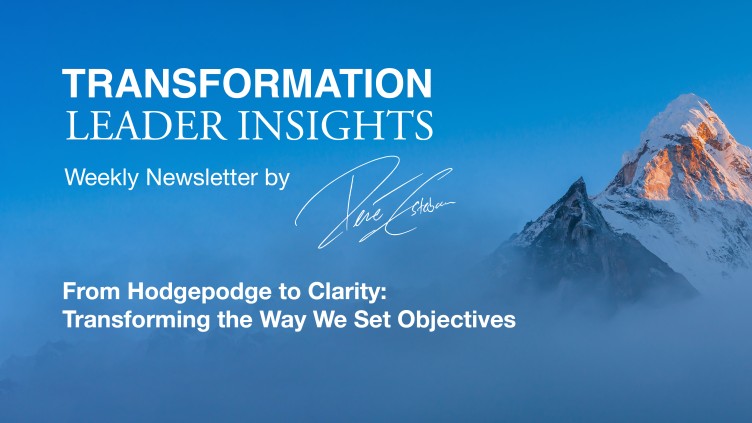
As an advisor to executives, and business leaders, I’ve often found a shared frustration – the murky process of setting strategic objectives. The conventional methods frequently churn out long lists of disparate actions, nice-to-haves, and ambiguous statements of intent. Little focus.
Such lists fall short of providing a clear, actionable direction. The question that arises then is, how do we pierce through this darkness? Here’s possibly another impulse to look at it:
- Think Outside-In: We must shift our perspectives and inquire about what we want from our key stakeholders. After all, in the immortal words of Albert Einstein, “We cannot solve our problems with the same thinking we used when we created them.”
- Identify Behavioural Outcomes: Direct your focus to the behavioural outcomes you desire from each stakeholder group. Essentially, the question to ask is, “What do you want your stakeholders to do?” This first step establishes a firm anchor for setting clear and measurable objectives.
- Convert Outcomes into Objectives: The next step is to convert these behavioural outcomes into organisational objectives, beginning with phrases like “to increase” or “to decrease”. This approach aligns your objectives with the strategic factors relevant to your stakeholders. But we want to make sure that all objectives lead to one tangible goal we want to achieve. The one goal that contributes massively to the company’s vision and is achievable within the next 12-24 months.
It’s time we bid goodbye to brainstorming that yields a muddled list of strategic objectives. Instead, let’s identify our key stakeholders and understand what we want from them. The result is strategic clarity.
Is this a 100% safe process to set the right goals?
Of course, not. Objective-setting is not always a one-size-fits-all process. The approach of shifting focus to stakeholders might work for one organisation but not for another. Context is key.
Further, not all objectives are directly measurable. Intangibles such as enhancing organisational culture or improving employee morale might not fit into the €, #, % framework but are critical nonetheless.
And relying solely on stakeholders’ behavioural outcomes might make an organisation too reactive rather than proactive. Balancing internal vision and external stakeholder expectations is crucial.
Here are some practical ideas to start with:
- Consider involving stakeholders directly in the objective-setting process e.g. through stakeholder interviews. By engaging stakeholders in constructive dialogue, organisations might discover unique insights and set mutually beneficial objectives.
- To avoid the hodgepodge list, organisations could introduce a rigorous prioritisation process to focus on what creates the biggest impact. This could be based on impact, feasibility, and alignment with the organisation’s mission.
- Cultivate a culture of continuous feedback and learning. Regularly revisiting and tweaking the objectives based on results can keep the organisation agile and adaptive. But let’s remember: We might adjust the objectives – but we will not change the one overarching goal.
Strategic objective setting is not merely about creating a list; it’s about connecting our organisation’s vision with measurable outcomes that bring value to our key stakeholders. It’s time we change the narrative.
As we journey towards strategic clarity, we must remember that the route to success is not always a straight line. As Zig Ziglar once said, “Success is the maximum utilisation of the ability that you have.” Let’s utilise our abilities to chart our unique paths towards success.
Ready to refocus and re-energize your organisation?
Let’s get in touch.
Your René Esteban
Founder, CEO of FocusFirst



